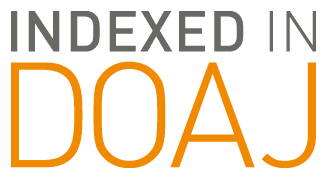About This Journal
The Journal of Human Services: Training, Research, & Practice (JHS:TRP) is an on-line, peer-reviewed journal that publishes book reviews and articles based on research, theory development, case studies, or program and intervention applications. The mission of the journal is to provide practitioners and educators with a forum to report data that substantiate current practices or raise questions about mainstream thinking and practices in education and service delivery within disciplines in human services:
- Counseling/Counseling, Clinical, School, Educational Psychology
- Social Work
- Rehabilitation Services
- Religion/Spirituality
- Leadership in Higher Education
- Speech and Language Pathology
- Vision Impairment/Orientation & Mobility
- Deaf and Hard of Hearing
- Military Sciences/Lifestyle
- Special Populations
The description of new measures, strategies, interventions, and perspectives on currently accepted practices, especially those related to various points of diversity are welcomed. No remuneration is offered for accepted articles or other materials submitted; no payment from author(s) is required upon submission or publication.
JHS: TRP is published two times annually. The editorial office is located at the James I. Perkins College of Education, Department of Human Services 302, Stephen F. Austin State University, Nacogdoches, TX 75962-3019. Guidelines for manuscript development are provided below. Manuscripts and inquiries should be sent to the Executive Editor, Dr. Robbie Steward, at stewardrj@sfasu.edu.
Guidelines for Authors
Examples of manuscript focus within disciplines include: Practitioner/Educator Preparation; Professional Development; Current Issues; Innovative Methods; Pedagogy; Applied Practice; Special Issues (1-2 lengthy articles w/commentaries from leading 3-4 scholars within discipline); and Book Reviews. There is a 35-page limit for fully developed manuscripts; 20-page limit for brief reports and Special Issue commentary articles; and 5-page for book reviews.
Submit the manuscript through the Submit Article tab located on the departmental website. Each electronic manuscript submission must include two attachments that use 12-point, Microsoft Word format (.doc), New Roman font, and prepared according to the Publication Manual of the American Psychology Association (APA) (2020) (i.e., tables, citations, references, guidelines for non-discriminatory language). One attachment must include the cover page with key words in the upper left corner, title of the manuscript, the authors’ names with academic degrees, university/college/ school/agency affiliations of each author, and complete contact information of all authors (including mailing address, telephone number, and e-mail address). The order of the authorship should be designated appropriately to guide the final citation if accepted for publication. The second file should include a cover page with the title only, the second page with a 50-100 word abstract, and the body of the manuscript, having subsequent pages with key words and page numbers in the header. To be considered for review, each manuscript submission must comply with APA guidelines and:
- Have no more than 3 tables and 2 figures (minimum resolution of 600-1200 dots per inch) with figure callouts embedded within the text and each table/figure on separate pages attached after the references;
- Include the publisher’s written permission from the copyright holder for lengthy quotations (generally 500 cumulative words or more from one source), previously published tables or figures; and
- Not be under simultaneous review by another journal or published elsewhere in substantially similar form or with substantially similar content.
Authors will receive immediate notification by e-mail of manuscript receipt. Results of the review should occur no later than 8 weeks after the date of receipt of review. Page proofs for review will be sent to only the corresponding author via e-mail. The corresponding author will receive an e-mail notification that includes information on the terms and conditions regarding the use of the final article PDF for the corresponding author and/or any coauthors.
